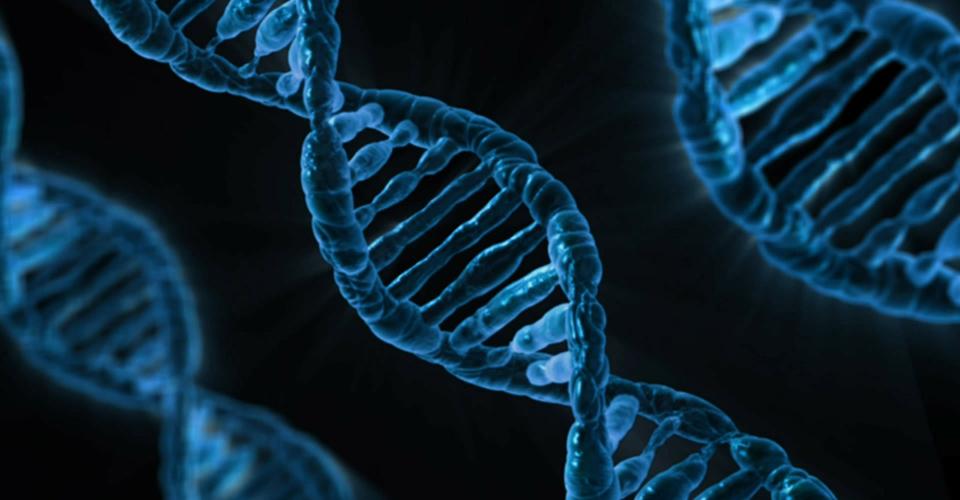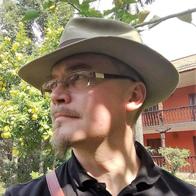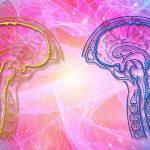
Ayesha Imran, Muhammad Umar Nawaz & Marko Susimetsä
Scientists and philosophers are yet to propose final answers to questions about the origin of mankind, the purpose of its existence and the possible existence hereafter. A similar conundrum, which interests teachers, instructors, coaches and all those responsible with the task of knowledge transfer and skill development, concerns the degree to which our biological makeup affects our cognition and learning abilities. It makes for an interesting question to ponder if an individual can acquire the same level of expertise as the likes of Lionel Messi, Albert Einstein or Elon Musk, if that individual is made to pass through rigorous, carefully orchestrated learning sessions from his or her early childhood, or if such excellence is only achievable if you have the right genes. It is an intriguing domain of research and researchers have tried to find correlation between the biological traits of an individual, the surrounding environment and the individual development in terms of learning.
Conception of man talks about our beliefs, knowledge and values (Susimetsä, 2018, p. 15). What is the importance of humanity? What are the origins and destiny of humans, where do they exist in relation to each other and their environment? As a concept, the conception of man is closely related to the concept of worldviews, but conception of man also comprises a strong ethical point about what humanity is and what a human being is like (Krohn, 1981, p. 10; Hirsjärvi, 1984, p. 91). The conception or idea about human beings acquires a prime position when it is considered through the lens of pedagogy. Teachers’ beliefs about their students is understood to have influence on students’ behaviour, the way knowledge is acquired in the class, as well as their thinking process (Borg, 2001). Teacher’s beliefs are also understood to have shown a positive correlation with the success of students (Hattie, 2012).
The biological conception of man has its roots in natural philosophy where philosophers and early scientists aimed to understand nature by careful observation. Two main schools of thought in the early 17th century discussed the concepts of essentialism and naturalism, where the first saw spiritual existence as separate from nature and the latter saw that the physicality of existence is all that there is. In western thinking, essentialism led to the belief that human beings were the result of some sort of godly creation and more or less separate from the animal kingdom. However, as the concept of scientific method arose, the naturalistic point of view began to gain more support. In 1735, Carl von Linné published his Systema Naturae which put homo sapiens on the map with other animals – in the category of mammals and the subcategory of primates.
History of the Biological Conception of Man
Biological determinism is the idea that there exists a relationship between the inherent features of humans – biological or genetic factors – and their status in a society (Graves, 2015; Allen, 1984). The term ‘biological determinism’ refers to the idea that the development and behaviour of individuals is controlled by their genes or some of their physiological components (Taylor, Whittier, & Rupp, 2011; Naiman, 2012). Biological determinism suggests that the advantages or disadvantages of certain groups of people in a society are not the result of social practices but due to a difference in inherited biological attributes of advantaged and disadvantaged groups of a society (Gould, 1981; Graves, 2015).
The idea of the concept is ancient, and the origins can be traced back to the times of Plato and they are also evident in the work of Aristotle (Gould, 1981; Graves, 2005). Aristotle’s classification of the living and supernatural, which is famously known as “Ladder of Being” (scala naturae), proposes sub-scales in humans, where some people are destined to be slaves and the rest were born to rule (Annas, 1996; Graves, 2005; Mahoney, 1987). This idea also entered popular culture and is evident, for example, in Edgar Rice Burroughs’ Tarzan novels: an offspring of a lord will show their superiority and achieve a position of rule even if they have been raised by a tribe of apes.
This line of thinking has led scholars to try to figure out the geographical difference of races, intellect and physical attributes. The modern-day concept of biological determinism and its evolution can be seen through the super naturalistic as well as biblical creationistic idea of the humanity through the medieval till the nineteenth century (Wahlsten, 1998). Priest (1851) suggested that there are differences in human beings in complexion, character and constitution and these differences are the result of a divine plan in which the dark-skinned human beings are amongst the lowest in all venerable traits.
According to Graves (2015), one of the earliest biological determinist research programmes following the super-naturalistic view was the craniometry. The project of craniometry included analysing skulls to infer the features like intellectual ability and other characteristics (Gould, 1981). These researches were categorized under the polygenist school of thought under anthropology and it dominated the early half of the 19th century (Popkin, 1978). The ideology of polygenist school of thought was propagated by the scholarly works of Louis Agassiz, Georges Cuvier, Samuel George Morton, Paul Broca, Josiah Nott and George Combe. Graves (2015) posits that Morton and Nott swayed American people’s opinion towards polygenism and this is apparent from the approbation of Josian Nott’s lecture on nigerology (Keel, 2013). These researches, which are often referred to as scientific racism, were propounded to provide justification for slavery and racism (Allen, 1984; Gould, 1981). The research work from the likes of Charles Darwin, Francis Galton, August Weismann, and Gregor Mendel dominated the second half of the nineteenth century and introduced and inspired concepts like phenotypes, genotypes, eugenics, the heritability of IQ, gender roles and biological bases as well as the debate on sociobiology (Allen, 1984; Lewontin et al., 1984).
Charles Darwin, in his famous ‘Theory of Natural Selection’, suggested that heritable attributes are acquired through a process of natural selection, which allows individuals to acquire advantageous selection (Essays, 2018). Darwin continued his work on the possible transfer of heredity from parents on to the offspring and came up with a theory of ‘Pangenesis’ in 1868. The theory of Pangenesis proposes a heredity mechanism and explains that each part of our body emits a similar tiny organic particle called gemmule which are clustered in to the gonads and provide heritable information to our gametes (Holterhoff, 2014).
Francis Galton, Darwin’s half-cousin, is also a prominent name in the research field of genetic determinism and is credited with the introduction of the concept of eugenics. Eugenics is a practice and belief that the genetic quality of the population can be increased by excluding the populations with defected or less desirable traits (Galton, 1892). In his famous book ‘Hereditary Genius’, Galton (1892, p. 88) writes, “To conclude: I feel convinced that no man can achieve a very high reputation without being gifted with very high abilities; and I trust that reason has been given for the belief, that few who possess these very high abilities can fail in achieving eminence”.
August Weismann’s ‘Germ-Plasm Theory’, proposed in 1892, is also considered a breakthrough work in the understanding of genetic and hereditary transmission of characteristics. Weismann (1893) propounded the theory of transmission of heritable information through a ‘germ plasm’ (later researchers identified and named it DNA). Gregor Mendel is known as the founder of modern genetics (Klein & Klein, 2013). He proposed ‘Law of Segregation’ and ‘Law of Independent Assortment’ and suggested that the characteristics of individuals are transmitted to the offspring through their parents. The seminal work of Mendel was posthumously recognized and appreciated (Mendel, 1865, 1970).
The concept of intelligence quotient (IQ), which is the measure of the intelligence of an individual also surfaced during the same era. Francis Galton is known to be the among the early researchers who tried to formulate a correlation between the intelligence and inheritance (Bulmer, 1999; Cowan, 1972). Alfred Binet together with some other researchers furthered the idea and proposed the Binet Simon Test, which was a performance measuring test, with an intention to ascertain the mental retardation in school kids (Kaufman, 2009). Herbert Goddard, inspired by Alfred Binet’s testing method, published a similar IQ measuring test and suggested that ‘feeble mindedness’ (intellectual inferiority) is the result of heredity and therefore such individuals should be forcefully stopped from reproducing (Goddard, 1912, Zenderland, 1998).
Biological determinism has amassed criticism. Sociologists have criticized the theory because they believe that it does not take in to account different environmental factors which could have an impact on human behaviour (Banyard & Grayson, 2000). Furthermore, the concept of biological determinism has been observed to have a strong correlation with the racialist thought (Gould, 1981; Graves, 2005; Montagu, 1997). The aforesaid movements like scientific racism and eugenics have advocated classism in the society, resulted in questionable sterilisation programmes, and have been criticized retrospectively.
However, researchers’ interest in biological inheritance did not wither down even in the twentieth century (Graves, 2015). It has been observed that even in the times of molecular biology, the idea of genetic determinism is well established and genes are often considered the ultimate controlling agents (Strohman, 1997). The debate about the nature vs. nurture gained attention and researchers started exploring the linkage between the inherited characteristics and the effect of environment. The field of sociobiology made a major contribution in this regard and E.O. Wilson’s magnum opus “Sociobiology: The New Synthesis” popularised the concept.
This idea is also evident in the relatively recent field of educational genomics, which uses the most recent findings of DNA to attempt to identify “particular traits that are related to education” (Gaysina, 2016). Gaysina (2016) proposes a future where education providers could tailor education based on a pupil’s DNA profile and learning styles so that every child can reach their “maximum potential”.
Taking a more modern perspective to biological approach to education, Boulter (2017) sees that education is merely a tool for survival: species adapt to their environments and seek ways of surviving from generation to generation. He proposes that human beings use education to achieve homeostasis, a stable internal environment, and improve their viability as a species. Taking into account our increasingly technological environment, “we as a species are biologically committed to a way of life that depends on skills and knowledge that must be taught” (Boulter, 2017).
Learning and Teachers’ Attitudes
The biological conception of man does not directly lead to a specific learning theory, but the fact that it sees the genetic make-up of a person as the most important indicator of what they will become – rather than the effect of the environment – leads some to search for intra-personal factors that affect learning. Barkow, Cosmides and Tooby (1995) have sought to integrate concepts from evolutionary biology and cognitive psychology. In their work, they argue that differences in information processing and storage abilities result from diverse biological characteristics. In this view, learning promotes the development of neural networks that store memories, information and knowledge, and both mental and physical skills (Barkow, Cosmides, & Tooby, 1995). They argue that the human brain contains so-called domain-general and domain-specific (instincts) information processing abilities that determine thinking and behaviour. The crux of their argument is that humans have produced such a variety of domain-specific mechanisms that they have become able to combine these mechanisms in novel ways. The combination of, for example, lingual, visual and motor skills have led to the development of language and writing. In a similar vein, Dalton, Wang, Phillips and Floresco (2016) argue that the brain favours learning through a multifaceted input approach, which activates various brain pathways. The complexity of learning processes involves an interaction of the external stimuli with the internal physiological, neurological and psychological factors.
The biological conception of man may also influence the way teachers think about human beings and learning, and this can affect the way they approach their students. As was explained above, biological determinism explains the distinction between human beings on basis of brain size, genetic makeup and other biological characteristics (Ellison & de Wet, 2017). Consequently, people are different because they have diverse biological features. The theory implies that people have unique characteristics that require selective teaching and learning, as proposed by proponents of educational genomics.
If a teacher has a biological conception of man, they will believe that the student’s skills and abilities are pre-determined, inherited, and that they will not be able to break the bounds of the limits set by their biological makeup. It may thus be believed that the students’ parents are a good indication of what their child may become. If the parents are menial workers, it is a sign that their genetic inheritance has led them to such professions and thus their offspring will share similar tendencies. A teacher with such beliefs may decide to focus on specific students with superior biological characteristics that predispose them to learn while ignoring the needs of other students. These ideas of human beings may also include polygenist attitudes that are generally deemed racist in today’s world: some human races are seen as more capable in some areas rather than others.
Given such preconceptions of human nature, including the relatively recent area of educational genomics, it may be seen as the responsibility of an education system to recognize the innate abilities of a child and then guide them onto a path of training that is best able to foster those abilities and transform that individual into a productive member of the community. Clearly, this is not the goal of a modern education system, which relies more on individual choice and motivation. But such beliefs may still affect teachers’ thinking: they may observe that some students are more talented than others and focus on them more than they do on students who have difficulties in learning. They may be unable to recognize learning difficulties and merely think that a particular student has reached his or her peak ability and it is a waste of effort to try to teach them more.
Biological Conception of Man and Teaching Methods
The classical biological conception of man is not very apparent in the modern classroom outside of the values and attitudes of the teachers (as explained above). However, there are some modern ideas about education that carry on the idea of biological determinism. One example is the area of educational genomics that we discussed earlier, and which includes a proposition of so-called “learning styles”. The assumption is that if we discover the innate learning style of a learner, we will be able to enhance their learning. The usual categories include visual learner, audial learners, kinetic learners etc. and there exist numerous online tools to discover which learning style a particular respondent leans towards.
Willingham, Hughes and Dobolyi (2015) state that learning styles connect to biological senses, which leads to auditory, visual, and kinesthetic learners. Auditory and visual learners prefer and learn best through listening and observing/reading respectively, while kinesthetic learners learn best when they involve themselves in practical activities (Willingham, Hughes, & Dobolyi, 2015). Once the teacher notes the appropriate learning style for their student, they can proceed to engage the student with stimuli that resonates with their preferred learning style.
The concept of learning styles is wide-spread and used by many teachers and education providers. However, Lilienfeld, Lynn, Ruscio and Beyerstein (2010, pp. 92–99) debunk this idea as a myth, quoting evidence from an extensive study of articles published on learning styles that shows that only a few of them underwent peer review. They also show that there’s no clear concept of what learning styles are and there are no reliable and valid ways to assess students’ learning styles. Furthermore, there is no evidence of the effectiveness of matching teaching styles with learning styles as it is generally impossible to do so: teachers necessarily use multiple methods, catering to multiple so-called learning styles and any success can therefore not be credited to a single teaching style (Lilienfeld et al., 2010).
In addition to the disputable position of learning styles, recent research has also shown that our old racial prejudices are unfounded. The Human Genome Project has shown that while there are certain differences between the five major races of humanity, the boundaries are blurred (Tishkoff & Kidd, 2004, pp. 25–26). However, as the current political climate has shown, race is still seen as a divisive topic and tensions often run high around the topic (Chou, 2017; Mccann, Auguostinos, & Lecouteur, 2004). It is a poignant reminder of human nature and the persistence of ideas such as biological determinism that this debate continues despite contrary evidence.
In conclusion, the biological conception of man offers insights into the genetic, physiological and neurological features that may influence learning and human capacity. However, as the existence of opposing views, such as the humanistic and sociocultural conceptions of man shows, there is no consensus on the extent that human being are products of their genes and how much they are affected by the environment in which they live. However, as the above discussion of the latest research shows, it would be a mistake to base any education choices on mistaken ideas of racial differences. For a modern teacher, the main lesson is perhaps to be aware of the existence of these opposing views and to recognise and reflect on possible unfounded biases in their own thinking.
Authors

Ayesha Imran, MSc in Web Intelligence and Service Engineering, University of Jyväskylä, recently finished her teacher studies at Häme University of Applied Sciences. Experienced in working in multicultural environments from IT industry and education at Metropolia University of Applied Sciences. Team player, target oriented with great zeal to learn new things and technologies.

Muhammad Umar Nawaz, MBA in Marketing and MS degree in International Business, recently finished his teacher studies at Häme University of Applied Sciences. An entrepreneur, a teacher and a football maniac. He takes interest in integrated marketing communication, consumer behavior and educational development.

Principal Lecturer, PhD Marko Susimetsä has worked at HAMK Häme University of Applied Sciences since 2006. His work includes development projects and teacher education. His interests include intercultural competence, education philosophy and history of education.
References
Allen, G. E. (1984). The Roots of Biological Determinism. Journal of the History of Biology 17(1), 141–145.
Annas, J. E. (1996). Aristotle on human nature and political virtue. Review of Metaphysics 49(4), 731–753.
Banyard, P., & Grayson, A. (2000). Introducing psychological research (2nd ed.). New York: Palgrave Macmillan.
Barkow, J. H., Cosmides, L., & Tooby, J. (1995). The adapted mind: Evolutionary psychology and the generation of culture. New York, NY: Oxford University Press.
Borg, M. (2001). Key concepts in ELT: Teachers’ beliefs. ELT Journal 55(2), 186–188.
Boulter, S. (2017). Education from a Biological Point of View. Studies in Philosophy and Education 36(2), 167–182.
Bulmer, M. (1999). The development of Francis Galton’s ideas on the mechanism of heredity. Journal of the History of Biology 32(3), 263–292
Chou, V. (2017, April 17). How Science and Genetics are Reshaping the Race Debate of the 21st Century [Blog post]. Retrieved May 17, 2018 from http://sitn.hms.harvard.edu/flash/2017/science-genetics-reshaping-race-debate-21st-century
Cowan, R. S. (1972). Francis Galton’s contribution to genetics. Journal of the History of Biology 5(2), 389–412.
Dalton, G. L., Wang, N. Y., Phillips, A. G., & Floresco, S. B. (2016). Multifaceted contributions by different regions of the orbitofrontal and medial prefrontal cortex to probabilistic reversal learning. Journal of Neuroscience 36(6), 1996–2006.
Ellison, G. T., & de Wet, T. (2017). Biological determinism. The International Encyclopedia of Biological Anthropology, 1–4.
Essays, UK. (2018, November). Sociology: Attack on Biological Determinism. Retrieved June 18, 2019 from https://www.ukessays.com/essays/sociology/sociology-a-powerful-attack-on-biological-determinism-sociology-essay.php?vref=1
Galton, F. (1892). Hereditary genius: An inquiry into its laws and consequences. London: Watts & Co.
Gaysina, D. (2016). How genetics could help future learners unlock hidden potential. Retrieved June 18, 2019 from https://theconversation.com/how-genetics-could-help-future-learners-unlock-hidden-potential-68254
Goddard, H. H. (1912). The Kallikak family: A study in the heredity of feeble-mindedness. New York: Macmillan.
Gould, S.J. (1981). The mismeasure of man. New York: W.W. Norton and Co.
Graves, J. L. (2005). The emperor’s new clothes: Biological theories of race at the millennium. New Brunswick, NJ: Rutgers University Press.
Graves Jr., J. L. (2015). Great is their sin: Biological determinism in the age of genomics. The Annals of the American Academy of Political and Social Science 661(1), 24–50.
Hattie, J. (2012). Visible Learning for Teachers: Maximizing Impact on Learning. London: Routledge.
Hirsjärvi, S. (1984). Johdatus kasvatusfilosofiaan [Introduction to Education Philosophy]. Helsinki: Kirjayhtymä.
Kaufman, A. S. (2009). IQ Testing 101. New York: Springer Publishing.
Keel, T. D. (2013). Religion, polygenism and the early science of human origins. History of the Human Sciences 26(2), 3–32.
Klein, J., & Klein, N. (2013). Solitude of a Humble Genius – Gregor Johann Mendel: Volume 1: Formative Years. Berlin, Heidelberg: Springer Science & Business Media.
Krohn, S. (1981). Ihminen, luonto ja logos [Man, Nature and Logos]. Jyväskylä: Gummerus.
Lewontin, R. C., Rose, S., & Kamin, L. J. (1984). Not in Our Genes: Biology, Ideology and Human Nature. New York: Pantheon Books.
Lilienfeld, S. O., Lynn, S. J., Ruscio, J., & Beyerstein, B. L. (2010). 50 Great Myths of Popular Psychology: Shattering Widespread Misconceptions about Human Behavior. New Jersey: Wiley-Blackwell.
Mahoney, E.P. (1987). Lovejoy and the Hierarchy of Being. Journal of the History of Ideas 48(2), 211–230.
Mccann-Mortimer, P., Augoustinos, M., & Lecouteur, A. (2004). ‘Race’ and the Human Genome Project: Constructions of Scientific Legitimacy. Discourse & Society 15(4), 409–432. https://doi.org/10.1177/095792650404370
Mendel, G. (1865). Versuche über Plflanzen-hybriden. Verhandlungen des naturforschenden Ver-eines in Brünn, Bd. 4, 3–47.
Mendel, G. (1970). Versuche über Pflanzenhybriden. Braunschweig: Friedrich Vieweg & Sohn. (Reprints of several of Mendel’s papers in German).
Montagu, A. (1997). Man’s most dangerous myth: The fallacy of race (6th ed.). Walnut Creek, MD: Altamira Press.
Naiman, J. (2012). How Societies Work Class, Power, and Change (4th ed.). MB: Fernwood Publishing.
Popkin, R.H. (1978). Pre-Adamism in 19th century American thought: “Speculative biology” and racism. Philosophia 8(2–3), 205–39.
Priest, J. (1851). Bible defense of slavery or the origin, history, and fortunes of the Negro race. Gallatin, TN: Willis A. Bush.
Strohman, R.C. (1997). The Coming Kuhnian Revolution in Biology. Nature Biotechnology 15, 194–200.
Susimetsä, M. (2018). Teacher’s Philosophical Thinking as a Basis for Pedagogical Choices. In M. Susimetsä & H. Ainjärv (Eds.), Theory and Practice in Driver Education (pp. 13–51). Tallinn: TLU Press.
Taylor, V., Whittier, N., & Rupp, L. (2011). Feminist Frontiers (9th ed.). New York: McGraw-Hill Education.
Tishkoff, S. A., & Kidd, K. K. (2004). Implications of biogeography of human populations for “race” and medicine. Nature Genetics 36, 21–27. https://doi.org/10.1038/ng1438
Wahlsten, D. (1998). Origins of genetic determinism in medieval creationism. Race, Gender, and Class 5(3), 90–107.
Weismann, August (1892). Das Keimplasma: eine Theorie der Vererbung. Jena: Fischer.
Weismann, A. (1893). The Germ-Plasm: A Theory of Heredity. Translated by W. N. Parker and H. Rönnfeldt. New York: Charles Scribner’s Sons.
Willingham, D. T., Hughes, E. M., & Dobolyi, D. G. (2015). The scientific status of learning styles theories. Teaching of Psychology 42(3), 266–271.
Zenderland, L. (1998). Measuring Minds: Henry Herbert Goddard and the origins of American intelligence testing. New York: Cambridge University Press.





